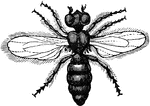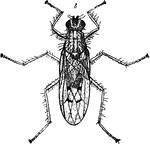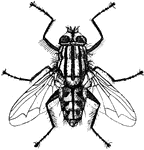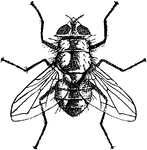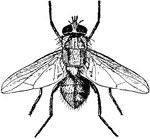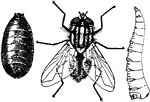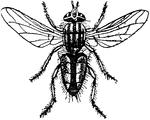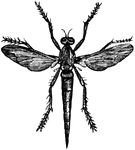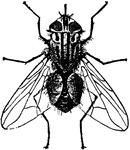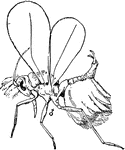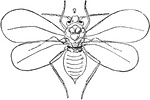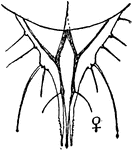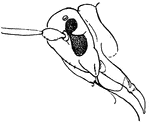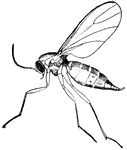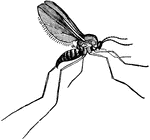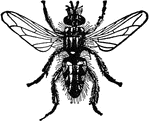
Blow Fly
"Blow Fly is the name popularly given to such two winged flies as deposit eggs in the flesh of animals,…

Boat Fly
"They carry the air required for their respiration in a space left for this purpose between the wings…
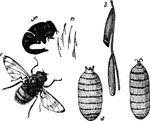
Breeze Fly
"a, eggs of the Breeze-fly; b, the same magnified; c, larva, or bot; d, chrysalis; e, perfect insect;…
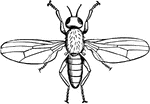
Cheese Fly
Piophila casei. Similar to the house-fly in appearance, but much smaller, and the only way to protect…
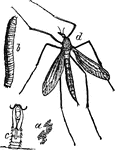
Crane Fly
"Crane-fly (Tipula oleracea): a, eggs; b, larva; c, pupa case as left by the insect, sticking out of…
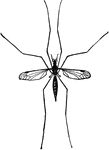
Crane Fly
Large flies with many-jointed, slender, thread-like antennae and scarcely shorter maxillary palpi.

Sarracenia Flesh Fly
"Sarracenia Flesh-fly (Sarcophaga sarraceniae). a, larva; b, pupa; c, fly; d, head and prothoracic joints…
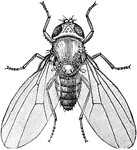
Common Fruit Fly
The Common Fruit Fly (Drosophila melanogaster) is an insect in the Drosophilidae family. The species…
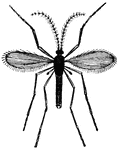
Hessian Fly
The hessian fly or barley midge, Mayetiola destructor, is a species of fly that is a significant pest…
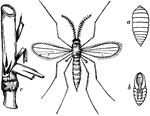
Stages of the Hessian Fly
Now known as Mayetiola destructor: "Hessian Fly (Cecidomyia destructor). a, larva; b, pupa; c, infested…
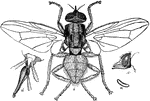
Horn Fly
This insect derives its common name from the fact that it seems to prefer clustering in great numbers…

Horse Fly
The horse-flies or tabanidae, comprise another set of troublesome creatures, of medium or large…
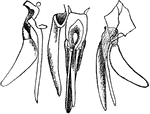
Mouth Structure of a Horse Fly
Piercing mouth structure of a "horse-fly": the sucking lip is omitted.
Horse Fly Larva
The larvae are elongated, somewhat flattened creatures, some living in the soil, some in water, and…
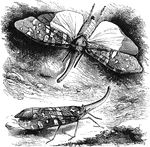
Lantern Fly
"The family of Fulgorina includes the Lantern-flies, of which a large species inhabiting…
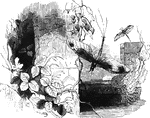
May Fly
"These insects are called Day-flies from the shortness of their existence in the perfect state;…
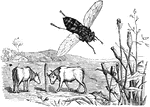
Ox Fly
"The Ox-fly, Oestrus bovis, is three-forths of an inch long, and lays its eggs in the skin of young…

Spanish Fly
"These insects are common in the South of Europe, and are especially abundant in Spain, where they are…

Spider Fly
"Spider Fly is a genus of dipterous insects, chiefly allied to the forest fly. The insects are parasitical…
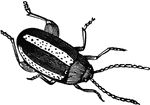
Turnip Fly
The European Turnip-Fly, Haltica nemorum, one of the most destructive species, belongs to a…

Window Fly
A small blue fly, slender and somewhat flattened in appearance, with yellow or reddish legs.
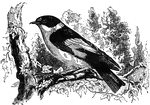
Collared Flycatcher
The collared fly-catcher, a bird which feeds on insects and the occaisional small vertebrate.
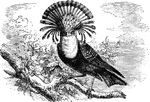
King Flycatcher
An impressive South American species of fly-catcher, with a transverse crest of reddish-fawn feathers.

Savannah Flycatcher
Found in the southern United States, the Savannah fly-catcher is notable for its long, forked tail.
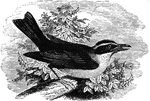
Spoonbill Tyrant Flycatcher
The spoon-bill tyrant fly-catcher has a large, thick bill, which it uses for feeding on butterflies.

Early Type Flying Machine
A vehicle that sustains itself in and propels itself through the air; an airplane, helicopter, glider,…

Langley's Flying Machine
An illustration of Langley's flying machine. A, Large airplane; b, small airplane; c, propelling screws.
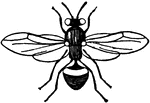
Gall-fly
Gall-fly is a name applied to the members of the family Cynipidae, which are not flies, but are related…
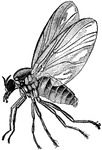
Buffalo Gnat
They are rather undersized, chunky flies, dark in color, with the thorax well developed and somewhat…
Buffalo Gnat Larva
The larva is curious little creatures, living under water in rather swiftly flowing streams, clinging…

Buffalo Gnat Pupa
The larva are curious little creatures, living under water in rather swiftly flowing streams, clinging…
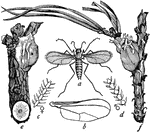
Resin Gnat
"Resin-gnat (Diplosis resinicola). a, adult female; b, wing of same; c, cross-section of antenna…
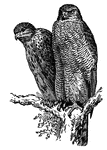
Goshawk
The Goshawk (Astur palumbarius) is a hawk abundant in the forest regions of northern Europe and Canada,…
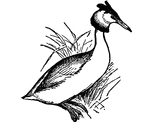
Great Crested Grebe
The Great Crested Grebe (Lophæthyia cristata) is a fresh-water, migratory, diving bird of the family…
